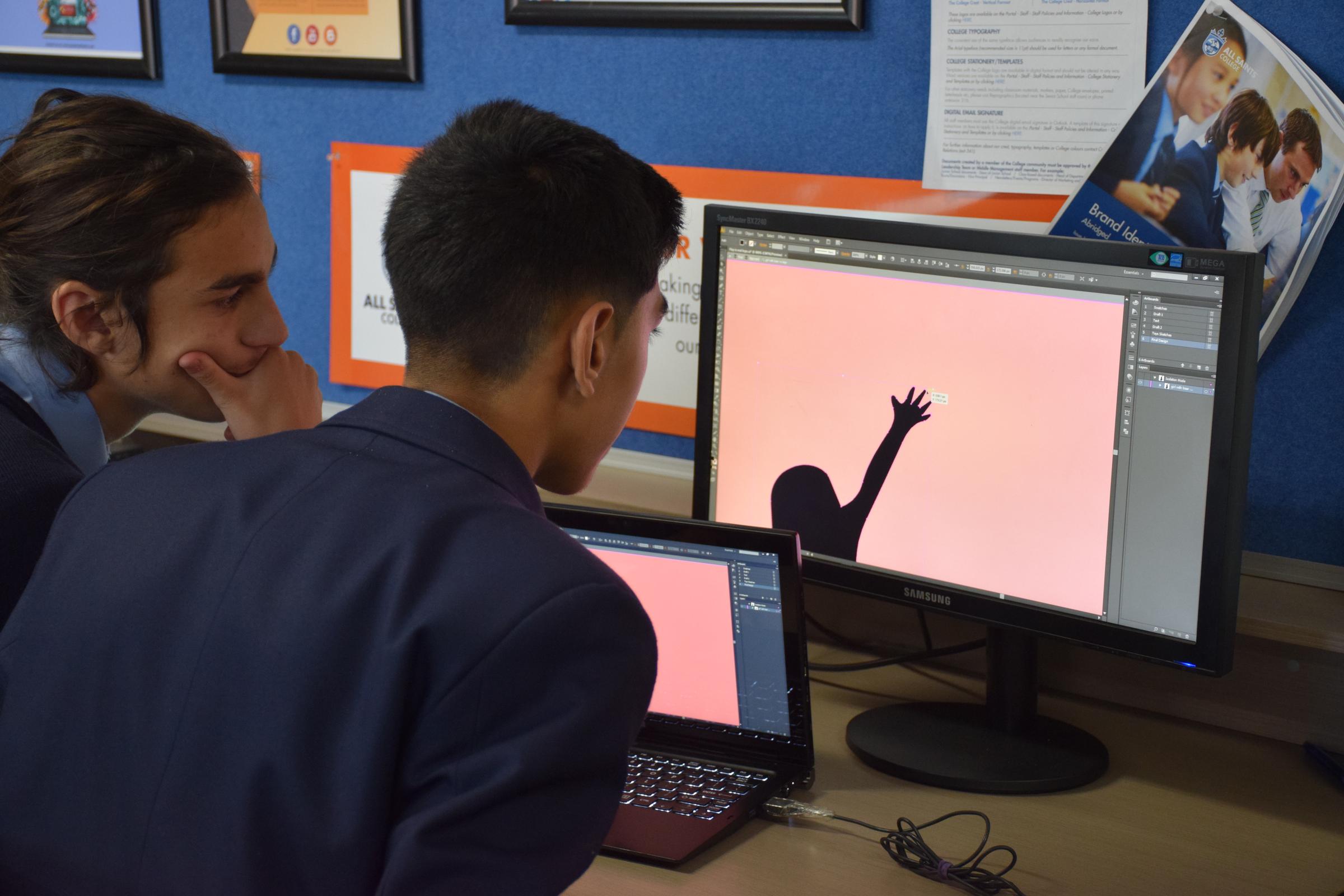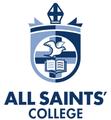DESIGN & TECHNOLOGIES LEARNING AREA

APPLIED INFORMATION TECHNOLOGY – GENERAL COURSE
The Applied Information Technology General course provides students with the knowledge and skills to use a range of computer hardware and software to create, manipulate and communicate information in an effective, responsible and informed manner. Students develop an understanding of computer systems; the management of data; and the use a variety of software applications to investigate, design, construct and evaluate digital products and digital solutions. The course offers pathways to further studies and a range of technology-based careers and a set of skills that equip students for the 21st century and give them an appreciation of the impact of information technology on society.
Year 11
Unit 1 – Personal communication
The focus of this unit is to enable students to use technology to meet personal needs. Students develop a range of skills that enable them to communicate using appropriate technologies and to gain knowledge that assists in communicating within a personal context.
Unit 2 – Working with others
The focus of this unit is to enable students to use a variety of technologies to investigate managing data, common software applications and wireless network components required to effectively operate within a small business environment. They examine the legal, ethical and social impacts of technology within society.
Each unit includes:
- a unit description – a short description of the focus of the unit
- unit content – the content to be taught and learned.
APPLIED INFORMATION TECHNOLOGY – ATAR COURSE
The Applied Information Technology ATAR course provides students with the knowledge and skills to use a range of computer hardware and software to create, manipulate and communicate information in an effective, responsible and informed manner. Students develop an understanding of computer systems; the management of data; and the use a variety of software applications to investigate, design, construct and evaluate digital products and digital solutions. Students investigate client-driven issues and challenges, devise solutions, produce models or prototypes and then evaluate and refine the developed digital product and solution. The course offers pathways to further studies and a range of technology-based careers, and a set of skills that equip students for the 21st century and give them an appreciation of the impact of information technology on society.
Year 11
Unit 1 – Media information and communication technologies
This unit focuses on the use of digital technologies to create and manipulate digital media. Students use a range of applications to create visual and audio communications. They examine trends in digital media transmissions and implications arising from the use of these technologies.
Unit 2 – Digital technologies in business
This unit focuses on the skills, principles and practices associated with various types of documents and communications. Students identify the components and configuration of networks to meet the needs of a business. They design digital solutions for clients, being mindful of the various impacts of technologies within legal, ethical and social boundaries.
Each unit includes:
- a unit description – a short description of the focus of the unit
- unit content – the content to be taught and learned.
Year 12
Unit 3 – Evolving digital technologies
This unit focuses on the use of applications to create, modify, manipulate, use and/or manage technologies. Students consider the nature and impact of technological change and the effect this has when creating products for a particular purpose and audience.
Unit 4 – Digital technologies within a global society
This unit focuses on the production of a digital solution for a particular client. Students undertake the management of data and develop an appreciation of the social, ethical and legal impacts of digital technologies within a global community.
Each unit includes:
- a unit description – a short description of the focus of the unit
- unit content – the content to be taught and learned.
COMPUTER SCIENCE – ATAR COURSE
In the Computer Science ATAR Course students explore the fundamental principles, concepts and skills within the field of computing. They learn how to diagnose and solve problems in the course of understanding the building blocks of computing. Students explore the principles related to the analysis and creation of computer and information systems; software development; the connectivity between computers; the management of data; the development of database systems; and the moral and ethical considerations for the development and use of computer systems.
This course provides students with the practical and technical skills that equip them to function effectively in a world where these attributes are vital for employability and daily life in a technological society.
Year 11
Unit 1 – Developing computer-based systems and producing spreadsheet and database solutions
The focus for this unit is developing computer-based systems and producing spreadsheet and database solutions. Students are introduced to the internal, interrelating components of computer-based systems in an industry context. They examine a variety of systems, build on their spreadsheet and database skills and gain an appreciation of how these concepts and technologies are used in industry.
Unit 2 – Developing computer-based systems solutions and communications
The focus for this unit is developing computer-based systems solutions and communications. Students are introduced to networking concepts, as applied to industry. Through the use of algorithms, students develop programming skills. They create solutions exploring the ethical, legal and societal implications of industry-based applications.
Each unit includes:
- a unit description – a short description of the purpose of the unit
- unit content – the content to be taught and learned.
Year 12
Unit 3 – Design and development of computer-based systems and database solutions
In this unit, students understand the design concepts and tools used to develop relational database systems. They consider the complex interactions between users, developers, the law, ethics and society when computer systems are used and developed.
Unit 4 – Design and development of communication systems and software solutions
In this unit, students gain the knowledge and skills to create software. They use algorithms and structured programming to design and implement software solutions for a range of problems using the Software Development Cycle. Students examine attitudes and values that lead to the creation and use of computer-based systems and their effect on society. Students consider networks, communication systems, including security and protocols.
Each unit includes:
- a unit description – a short description of the purpose of the unit
- unit content – the content to be taught and learned.
DESIGN – GENERAL
In the Design General course students develop skills and processes for current and future industry and employment markets. Students are equipped with the knowledge and skills to understand design principles and processes, analyse problems and devise innovative strategies through projects. Students are able to focus on particular contexts from a choice of photography, graphics, dimensional design and technical graphics. The Design General course also emphasises the scope of design in trade based industries allowing students to maximise vocational pathways.
Unit 1 – Design fundamentals
The focus of this unit is to introduce design process and practice. Students learn that design can be used to provide solutions to design problems and communication needs.
Unit 2 – Personal design
The focus of this unit is personal design. Students learn that they visually communicate aspects of their personality, values and beliefs through their affiliations and their manipulation of personal surroundings and environments.
Each unit includes:
- a unit description – a short description of the focus of the unit
- unit content – the content to be taught and learned.
DESIGN – ATAR COURSE
In the Design ATAR course students develop skills and processes for current and future industry and employment markets. Students are equipped with the knowledge and skills to understand design principles and processes, analyse problems and possibilities, and devise innovative strategies within design contexts. These include photography, graphics, dimensional design and technical graphics. The Design ATAR course also emphasises the scope of design in professional industries allowing students to maximise university pathways.
Year 11
Unit 1 – Product design
Students learn that the commercial world is comprised of companies, requiring consumer products, services and brands for a particular audience.
Unit 2 – Cultural design
Students learn that society is made up of different groups of people who share diverse values, attitudes, beliefs, behaviour and needs; and that different forms of visual communication transmit these values and beliefs.
Year 12
Unit 3 – Commercial design
Students become aware that design has commercial considerations that are influenced by various stakeholders to produce products, services and brands.
Unit 4 – Influential design
Students learn how the communication of ideals, messages, information and values can influence opinion and attitudes.
FOOD CERT II IN HOSPITALITY
This qualification provides a pathway to work in various hospitality settings, such as restaurants, hotels, motels, catering operations, clubs, pubs, cafes and coffee shops. Job roles involve mainly routine and repetitive tasks using practical skills and basic industry knowledge, working under direct supervision.
